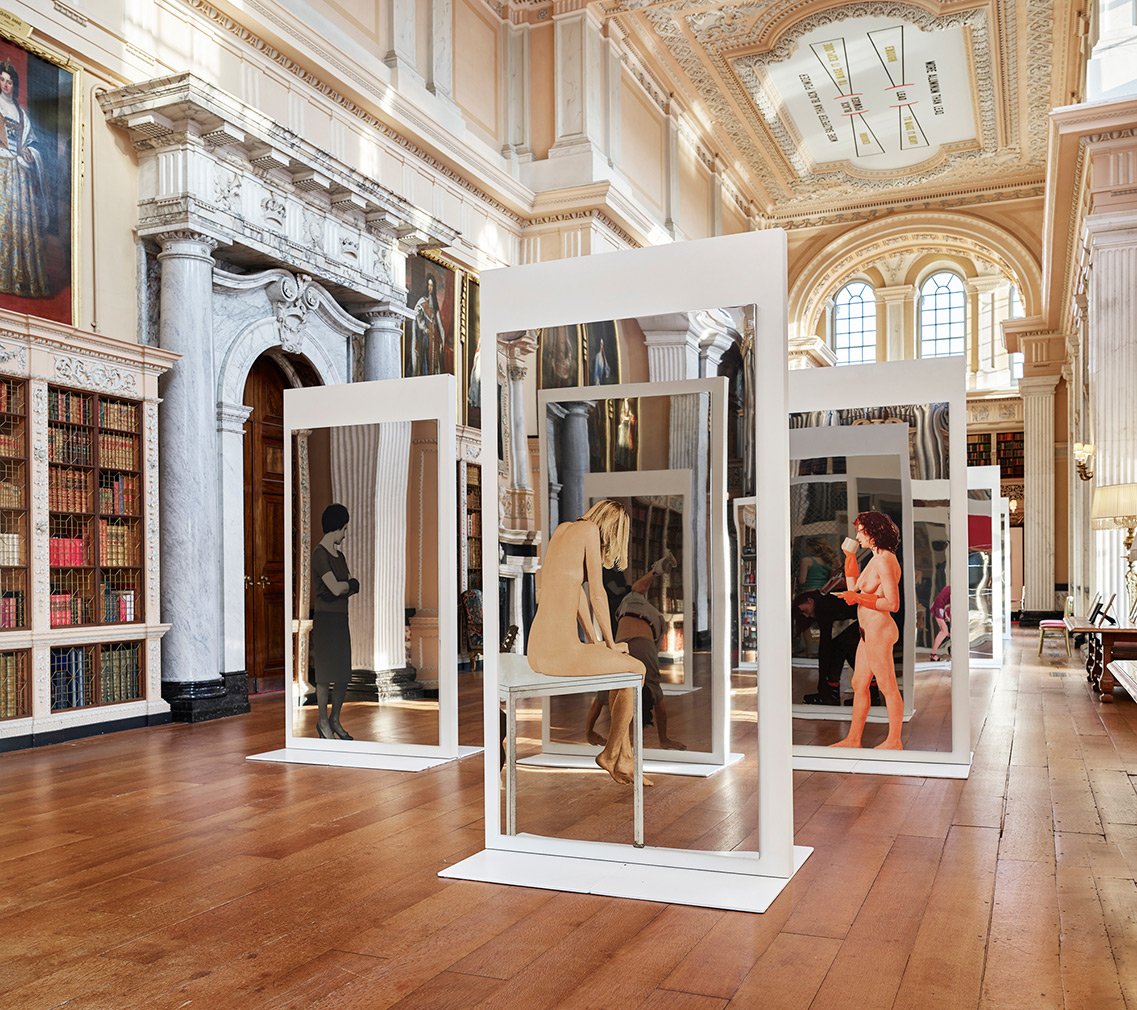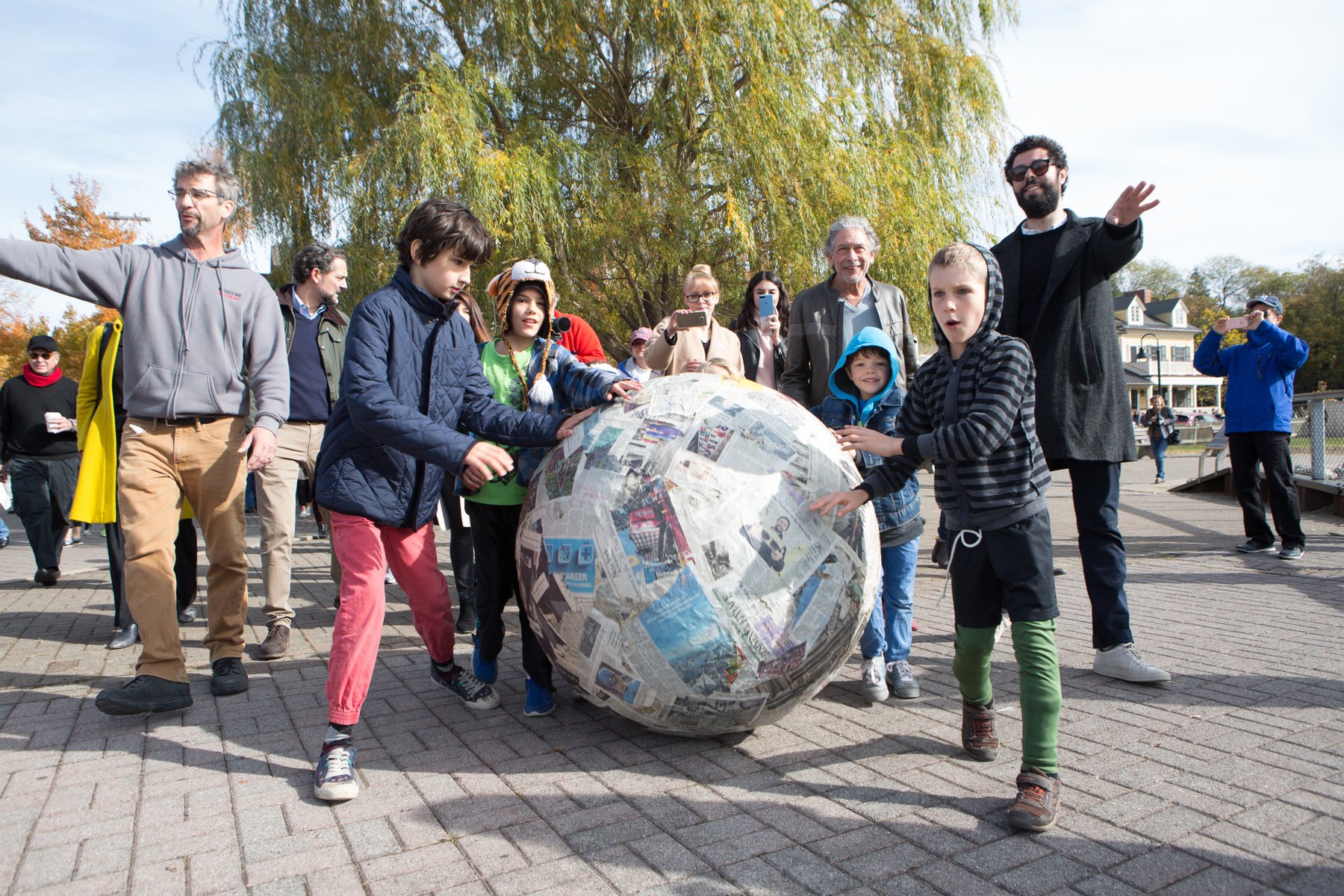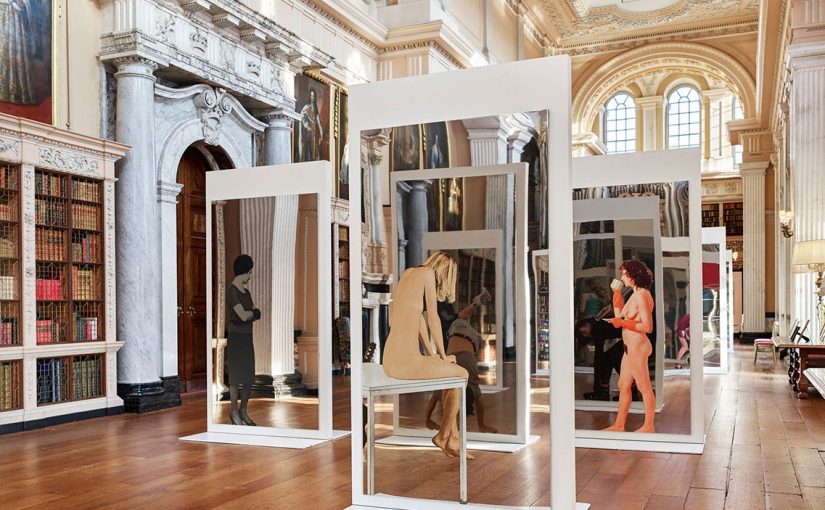I remember coming back to ADM after the break and noticing that they did some re-decoration, which shocked me. They seem to have spiced up the classic ADM rooftop with some gardening…
I didn’t think much of it until I found out that we were going to attend a dialogue session with the artist behind the “re-decoration”. I thought, whoa, so that’s an installation? I wondered if it was going to be permanent; I couldn’t decide whether or not I liked it.
After watching the documentary showcased at the Dome, I had a better understanding of Pistoletto as an artist. I could relate to his relationship with his father, and how he discovered his personal way of art-making. There were two works that stood out to me from the film: his mirror paintings and the “Walking Sphere”.
M I R R O R P A I N T I N G S

I love how its simplicity can bring about such profound meaning. I myself have painted on mirrors before, but I never thought about it in a way that Pistoletto did. How a simple change of medium could change the meaning of the work, the way the audience would view it, the entire concept I think is just mind blowing.
The mirror itself has a great deal of symbolism. Of self-reflection, truth, and parallel worlds to name a few. By painting common people on the mirrors, Pistoletto manages to capture a moment in time, sometimes of the people off-guard, hence showing their true selves. In a sense, it feels like two separate moments, two separate individuals were brought together in this work.
Imagine if the mirror was displayed in different settings. It would be as if transporting the subject of the painting to different places! Another interesting concept that I interpreted is voyeurism. How the paintings capture these people in moments, and us as an external audience, are brought into the same plane of existence in that same moment.
W A L K I N G S P H E R E

The Walking Sphere is a performance that Pistoletto had started in 1967. Since then, numerous reenactments have been performed in many different places.
“We want to bring art out of the museums into the streets, to people. And to act. The sphere is a point of attraction. It’s a way to bring people together, and to act together”
– Pistoletto during one of the reenactments, in Cold Spring, November 2017
The world of art can sometimes be depicted as or seen as inaccessible, out-there or exclusive. This is enhanced by the reputations of museums. On one hand, I feel that it is important to value art and artists, but on another hand I also feel that art should also be accessible to everyone.
This is what Arte Povera, or art of the poor, is about. It is not poor art, but it is art for everyone. With very simple, cheap, available materials, the Walking Sphere is able to bring people together, creating a moment, an experience. It literally brings the art to the people, anyone and anywhere.
Ultimately, I feel that in this day and age, there is no longer clear boundaries in the art world. You can make art in any way, and value it in any way. Everything depends on the context, the artist, the audience, the message, etc. I think that it’s really cool how as artists we have the freedom to define that for ourselves.

